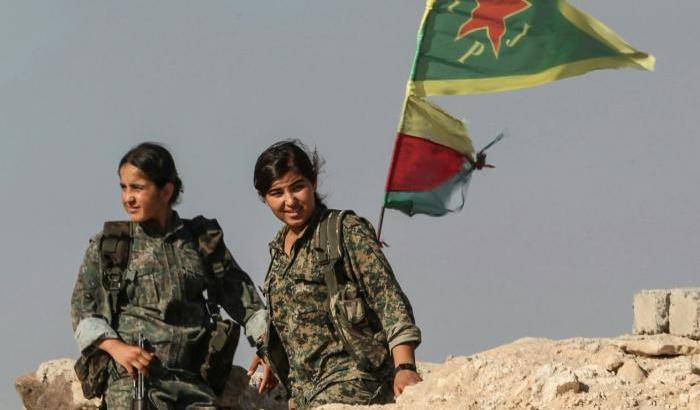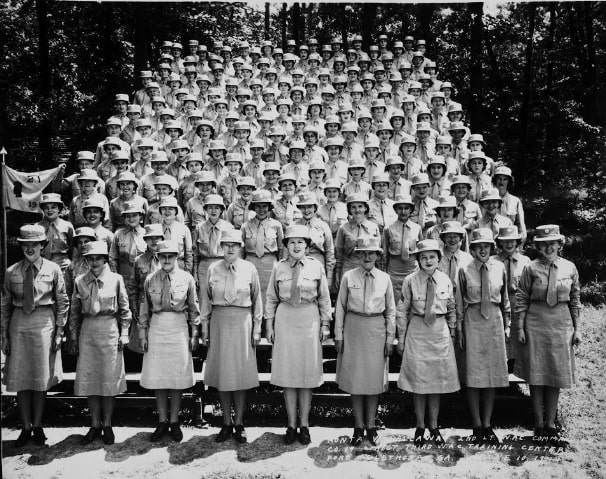Let’s start with a certain fact: the role of women in the Armed Forces is in increase worldwide. From the Middle East to Ukraine, there are more and more female soldiers on the front. However, the gender difference within the military world is still perceived, to be bridged through legal provisions and good practices. Hierarchy which sometimes turns into prevarication, or worse still bullyingwith requests or sexual abuse against those who, in addition to being the ‘sit weak‘, they also have a lower rank. According to some reports, this is what happened in the Royal Navywho ordered ainvestigation on alleged accusations of bullying and sexual harassment against some military personnel on board the submarines of the British Navy. This was reported by the BBC, citing the testimonies entrusted by several women who served in the fleet at the Daily Mail.
“Sexual harassment has no place in the Royal Navy”
The admiral Sir Ben Key defined the claims “Repugnant”, adding that “sexual harassment has no place in the Royal Navy and will not be tolerated.” Anyone found guilty will be held responsible, ”he said. Among the facts revealed in detail by the Mail, the lists compiled by the male members of the crew that established the order in which the colleagues would be raped in case of sinking of the submarine. One woman told the Mail she was sexually assaulted by a man of higher rank while he slept, and who, on another occasion, received a punch to a kidney by a senior officer. Another stated that a fellow soldier left photos of naked models and coins in her cabin, suggesting that they expect in I change a sexual act. Still others reported requests for sexual acts, shouting, or being subjected to throwing notes or pens. The abuses would have gone on for more than a decade, practically since, in 2011, women were admitted in the Navy.
In Italy, women’s military service began in 2000 with the entry into force of law no. 380/1999 which allowed women to enlist in the Armed Forces, in the Carabinieri and in the Port Authority, registering the presence of 18 thousand female unitsequivalent to 6% of military personnel, as reported on the website of the Chamber of Deputies. The Italian data show an increase in the female presence in recent years, with a substantial growth between 2018 and 2020 and a number, at the end of 2019, of 1,924 officers, 2,663 non-commissioned officers, 12,694 graduate and enlisted soldiers and 664 students of academies and military schools. According to a survey by Eumetra promoted by the Defense Staff on the attractiveness of a military career for Italian girls, conducted on a sample of 2.026 young people of which 1,029 girls and 997 boys among 17 and 25 years oldgirls are theoretically more interested in military careers than their male peers (52% compared to 48% of boys), but they do not transform this interest into actual enrollment, because they find it incompatible with private life. For 28% of girls (compared to 17% of boys), in fact, the military career takes too long and not leaves room for personal lifewhile for 15% of women (12% of men) enrollment does not allow them to have a family and take care of them.
Unlike other countries, the employment of women in the Italian army does not follow a different protocol regarding national duties and male and female careers are equal, as explained by the lieutenant colonel Rosa VinciguerraHead of the Equal Opportunities and Gender Perspective section of the Defense Staff: “The absence of foreclosures of positions and employment beyond role or categories makes the Italian recruitment model among the most advanced in the world as regards equal opportunities”.

Military women in the rest of the world
As it was for the Kurdish women from Rojava than in 2012 have taken up their rifles against the advance of Daesh in Syria, the female fighters return to the center of the news ten years later on the occasion of the war in Ukraine. Female soldiers who voluntarily enlisted in the Ukrainian National Guard last February, like Olena Kushnir, sergeant major and doctor, one of the hundred Ukrainian women left to fight in Mariupol, who lost her life on Easter Sunday during the siege of her city, after saving her son thanks to a humanitarian corridor. Soldier women like Alla Akimova, 38 years old, who chose to join the Ukrainian army as a cook, to defend her country and stand next to her husband during the war. Soldier women like Giulia Schiff, Italian, known as Jasmine, Air Force pilot, victim in 2018 of hazing by her colleagues in the Italian army, today the only woman volunteer in the foreign legion in Ukraine, enlisted to fight together with other “foreign fighters” from all over the world. Military women who today represent the 15,6% of the Ukrainian army, a figure that has increased 15 times in the last ten years, due to the tightening of relations between Ukraine and Russia and following the annexation of Crimea by Moscow.
Ukrainian women perform military service dal 1993, two years after the dissolution of the Soviet Union, and also hold front-line roles. According to data from the Ministry of Defense, in 2008 there were 1,800 women in the Ukrainian army, 23,000 in 2017, 24,487,000 in 2018, 27,074,000 in 2019 and 29,760,000 female soldiers in 2020. After years of voluntary enlistment starting from 2014 in the so-called “invisible battalions”, in 2017 Ukrainian female soldiers were authorized by the Armed Forces to enlist in 62 combat positions, which were forbidden to Russian female soldiers, who cannot carry out sentinel duties and garrison and are not sent to the front line in the event of war, despite being authorized by a presidential decree to enlist regularly since 1992.
The Russian armymoreover, according to the Center for Strategic & International Studies, in 2020 it had 4.26% of women (about 41,000 in total), a relatively low number compared to the total number of Russian soldiers. If we look at contemporary history, women made their first entry into the regular army during the First World War with the creation of a battalion of Cossacks disguised as men led by the Russian Marija Bochkareva, called the “Battalion of the death of women”, who fought in Belarus in 1917 against the enemies of the Tsar. This was followed by the female battalions of the Second World War of predominantly British and American origin, as Red Cross and in the anti-aircraft, and the 100 thousand soldiers of Tito’s People’s Liberation Army of Yugoslavia lined up against the Axis powers, who fought alongside their male colleagues since the beginning of the partisan struggle.

Founded in 1942 as a female branch of the United States Army on the occasion of the Second World War, the Women’s army auxiliary corps (Waac) was integrated into the US regular army in 1976, the year in which US women were admitted to the Military Academy and then enlisted in international war theaters, as happened in the first Gulf War, covering a percentage of 16% of the total of the army.
It dates back to 1948 instead the creation of Israeli Defense Forces (Idf), which since then provides for compulsory military service for women lasting two years, compared to two years and eight months for men, with a derogation for women who are married, with children or who serve in the ultra-Orthodox religious community . In 2011, 34% of the Israeli army was made up of women, while in 2021 the percentage of women rose to 40% and today it is believed that Israel has the largest number of women enlisted in the world in percentage, engaged in the national territory. The Israeli fighters, considered unique in the Middle East for several decades, have been joined in recent years by a large number of Middle Eastern female soldiers, due to the worsening of internal conflicts and above all due to the advance of ISIS in their countries. This is the case with the first peshmerga women’s battalion (literally “fighters who fight to the death”), born in 1996 among Kurdish women stationed in northern Iraq during the civil war that broke out in Iraq following the first Gulf War.
Others were inspired by the 600 peshmerga women Kurdish fighters, like the women of Rojava, in northern Syria, who fight ISIS battalions on a par with their male comrades in arms, according to the egalitarian ideology of gender equality promulgated by the Kurdistan Workers’ Party (PKK) and the its Syrian extension Ypg. Or like the Iraqi battalion peshmerga Sulaimaniya, based in the north-east of Baghdad, which has 500 young women between the ages of 20 and 27, admitted to military school like their male peers. Or like the Yazidi fighters, of Kurdish ethnicity, who formed a peshmerga brigade after having managed to escape the sexual slavery inflicted by Isis jihadists and finally as the “Babylon battalion” built in the Syrian province of Hasakah, formed by Orthodox Arabs allied to the peshmerga in the area. On the Yemeni front, however, within the conflict between Shiites and Sunnis, Houthi women of zaidi origin have lined up, fighting the Saudis, the Americans, Israel and al-Qaeda and spreading the radical militarist and religious doctrine, while placing themselves on the opposite side of the jihadists.
The number of female soldiers in China, after the government’s decision in January 2020 to increase military conscription for women from one to two times a year, including female graduates, college graduates and university students. According to data released in 1994 by the US Congressional Research Service, then confirmed in 2015 by China Military Online, women make up just over 4.5% of the military personnel of thePeople’s Liberation Army, for a total of 53,000 women against one of the largest armies in the world. In China, female soldiers also serve in the Marine Corps, Special Forces and drug police. Military service is encouraged by the Chinese government and is popular with young women because it offers a good education and improves social standing, thanks to appearances on television in official parades, portending a progressive increase in Chinese female soldiers in the near future.
